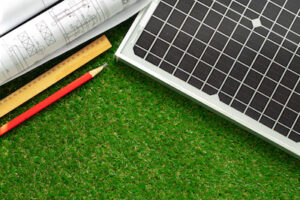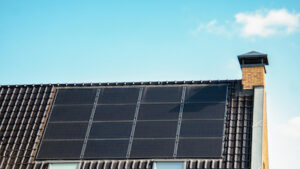How to Make Your Home Environmentally Friendly and Energy Efficient With Environmental Architecture
In today’s world, the urgent need to address environmental challenges has made sustainable living a top priority. One significant aspect of sustainable living is the concept of environmental architecture, which focuses on creating homes that are environmentally friendly and energy efficient.
By incorporating sustainable design principles, efficient energy systems, and conscious material choices, homeowners can play an active role in reducing their environmental impact. In this article, we will explore various strategies and practices to make your home more environmentally friendly and energy efficient.

Passive Design and Building Envelopes
Passive design is an integral part of environmental architecture as it involves utilizing natural resources such as sunlight, airflow, and shade to minimize the need for artificial heating, cooling, and lighting. Optimizing the building envelope is a key aspect of passive design.
Insulation: Adequate insulation is crucial for maintaining a consistent indoor temperature. Properly insulated walls, roofs, and floors reduce heat transfer and minimize the need for excessive heating or cooling. Materials such as cellulose, fiberglass, and spray foam insulation are commonly used to enhance energy efficiency.
Windows: Energy-efficient windows with low-emissivity (Low-E) coatings and multiple glazing can significantly reduce heat gain in summer and heat loss in winter. Strategic window placement can also maximize natural daylight, reducing the need for artificial lighting during the day.
Renewable Energy Integration
Integrating renewable energy systems in your home can substantially reduce reliance on fossil fuels and lower greenhouse gas emissions.
Solar Power: Installing solar panels on rooftops allows homeowners to harness the sun’s energy to generate electricity. Advancements in technology have made solar panels more affordable and efficient. By investing in solar power, homeowners can not only reduce their electricity bills but also contribute to a cleaner and greener energy grid.
Wind Energy: In regions with consistent wind patterns, small-scale wind turbines can be installed to generate clean energy. Although less common for residential homes, wind energy can be a viable option for those in suitable locations.

Energy-Efficient Appliances and Lighting
Choosing energy-efficient appliances and lighting options can significantly reduce your home’s energy consumption.
Energy Star Appliances: When purchasing new appliances, look for the Energy Star label. These appliances meet strict energy efficiency standards set by the Environmental Protection Agency (EPA). Energy Star-rated appliances consume less energy, saving you money and reducing environmental impact.
LED Lighting: LED bulbs are more energy-efficient than traditional incandescent bulbs and have a longer lifespan. Switching to LED lighting throughout your home can reduce energy consumption and lower electricity bills.
Smart Home Technology and Energy Management Systems
The emergence of smart home technology has revolutionized energy management in households.
Smart Thermostats: Installing a smart thermostat allows you to control heating and cooling remotely and adjust settings based on occupancy and outdoor conditions. This optimization reduces energy waste and promotes efficient temperature control.
Smart Power Strips: Energy-saving power strips can detect when electronic devices are not in use and automatically cut off the power, eliminating “vampire” energy consumption.
Energy Monitoring Systems: Real-time energy monitoring systems provide insights into your home’s energy usage. By identifying energy-intensive appliances and modifying usage patterns, homeowners can make informed decisions and adopt energy-saving habits.
Water Efficiency and Conservation
Reducing water consumption is an essential aspect of environmental architecture and sustainable living.
Water-Efficient Fixtures: Install low-flow toilets, showerheads, and faucets that reduce water consumption without compromising performance. These fixtures can significantly decrease water usage and lower water bills.
Rainwater Harvesting: Collecting and storing rainwater for non-potable uses, such as landscape irrigation or toilet flushing, can conserve water resources and reduce reliance on municipal water supplies.
Efficient HVAC Systems
Another crucial aspect of making your home more environmentally friendly and energy efficient is optimizing your HVAC systems. Heating, ventilation, and air conditioning (HVAC) systems are major energy consumers in homes. Upgrading to energy-efficient HVAC systems can significantly reduce energy consumption and lower utility bills.
Consider replacing older units with high-efficiency models that use less energy to heat and cool your home. Look for systems with high Seasonal Energy Efficiency Ratio (SEER) ratings and Energy Star certifications, indicating their superior efficiency. Additionally, regular maintenance and cleaning of HVAC systems ensure optimal performance and energy efficiency. Properly maintaining and servicing your HVAC systems not only saves energy but also prolongs their lifespan.
Water Heating Efficiency
Water heating is another significant contributor to a home’s energy consumption. To improve water heating efficiency, it’s essential to consider alternative options and adopt energy-saving practices. One option is to install a high-efficiency water heater that utilizes advanced technologies to reduce energy waste. Tankless water heaters, for example, heat water on demand, eliminating the need for standby energy consumption.
Another option is to consider a solar water heating system, which harnesses the sun’s energy to heat water. Solar water heaters can be a cost-effective and sustainable solution, particularly in regions with ample sunlight. Additionally, insulating your hot water pipes helps minimize heat loss during distribution, reducing the time it takes for hot water to reach your faucets. Furthermore, incorporating low-flow showerheads and faucets can significantly reduce hot water usage without compromising comfort or functionality.
Sustainable Landscaping
While focusing on the interior of your home is crucial, don’t overlook the importance of sustainable landscaping practices. Sustainable landscaping not only enhances the beauty of your property but also promotes environmental sustainability. By implementing sustainable landscaping practices, you can reduce water consumption and minimize the use of harmful chemicals.
One approach to sustainable landscaping is to choose native plant species that are well-adapted to your region’s climate. Native plants require less water and maintenance, as they are naturally suited to local conditions. They also support local ecosystems, promoting biodiversity. Additionally, using organic fertilizers and avoiding excessive pesticide and herbicide use helps maintain a healthy and environmentally friendly landscape.
Consider incorporating rain gardens or permeable surfaces into your landscaping design. Rain gardens are landscaped areas designed to capture and absorb rainwater runoff. By directing rainwater into these gardens, you can prevent water runoff and promote groundwater recharge. Permeable surfaces, such as permeable pavements or gravel paths, allow rainwater to infiltrate the ground instead of flowing into storm drains. These features help reduce the strain on municipal stormwater systems and replenish local water sources.

FAQ
How can I incorporate environmental architecture principles into an existing home?
Retrofitting an existing home to incorporate environmental architecture principles is possible. Start by assessing the energy efficiency of your home and identifying areas that need improvement, such as insulation or outdated appliances. Consult with an environmental architect or energy efficiency expert to develop a plan tailored to your specific needs.
Are there any financial incentives for implementing environmental architecture practices?
Yes, many governments and utility companies offer financial incentives and rebates for adopting sustainable practices. These incentives can help offset the initial costs associated with energy-efficient upgrades and make them more affordable for homeowners.
Does environmental architecture only apply to residential buildings?
No, environmental architecture principles can be applied to various types of buildings, including commercial, institutional, and public spaces. The focus is on creating sustainable and energy-efficient structures that minimize their environmental impact.
How long does it take to see a return on investment for energy-efficient upgrades?
The return on investment for energy-efficient upgrades varies depending on factors such as the cost of energy in your area, the specific upgrades implemented, and your energy consumption habits. However, many homeowners start seeing savings on their utility bills within a few months to a few years.
Can environmental architecture help reduce indoor air pollution?
Yes, environmental architecture emphasizes using non-toxic materials and implementing proper ventilation strategies to improve indoor air quality. By minimizing the presence of volatile organic compounds (VOCs) and promoting airflow, environmental architecture contributes to a healthier living environment.
Conclusion
Environmental architecture provides homeowners with the opportunity to create eco-friendly, energy-efficient homes that have a positive impact on the environment. By embracing sustainable design principles and implementing strategies such as passive solar design, renewable energy generation, and water conservation, individuals can reduce their carbon footprint and enjoy the benefits of comfortable and environmentally responsible living space. Whether building a new home or retrofitting an existing one, environmental architecture offers a pathway to a more sustainable future.
